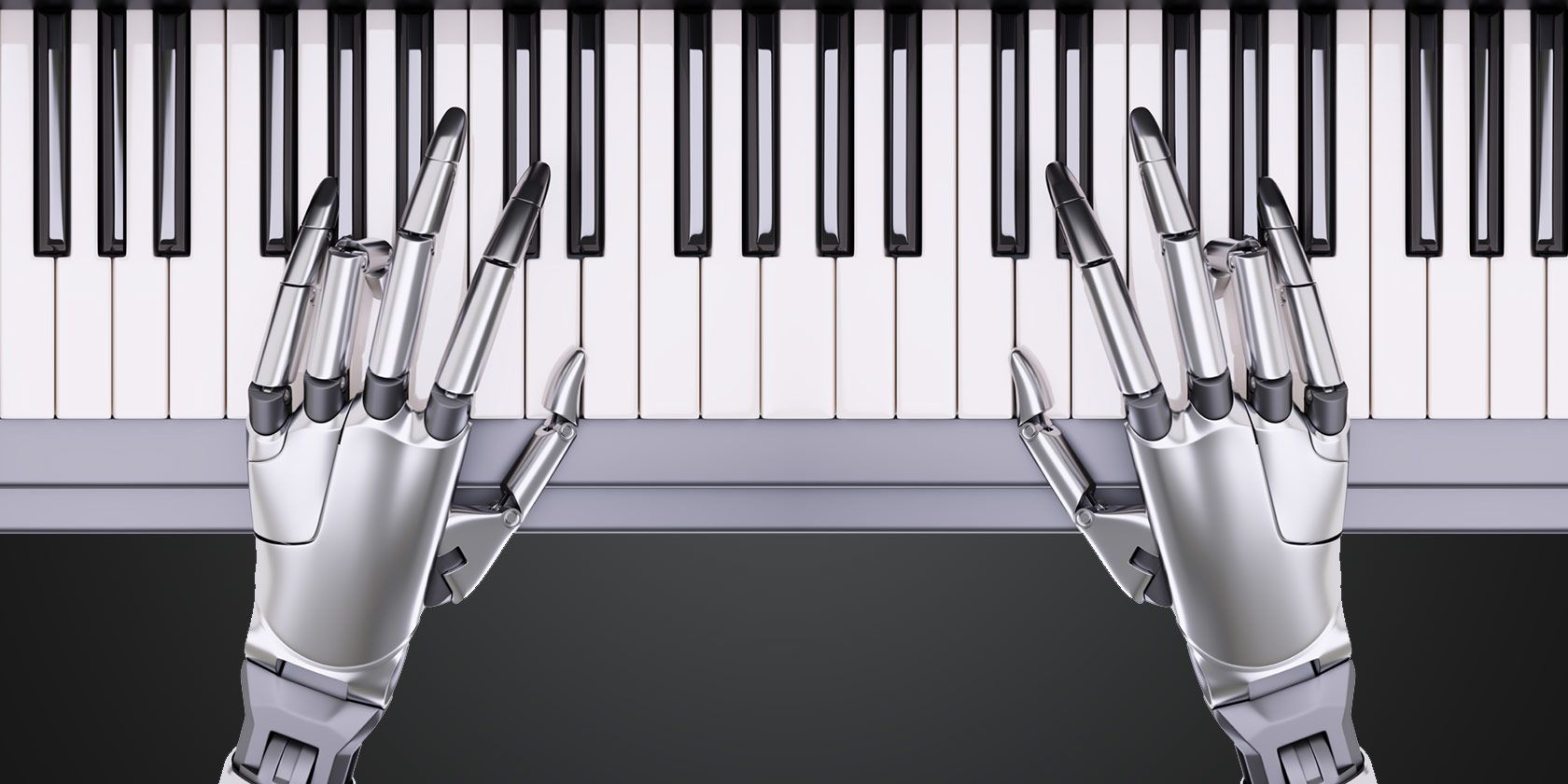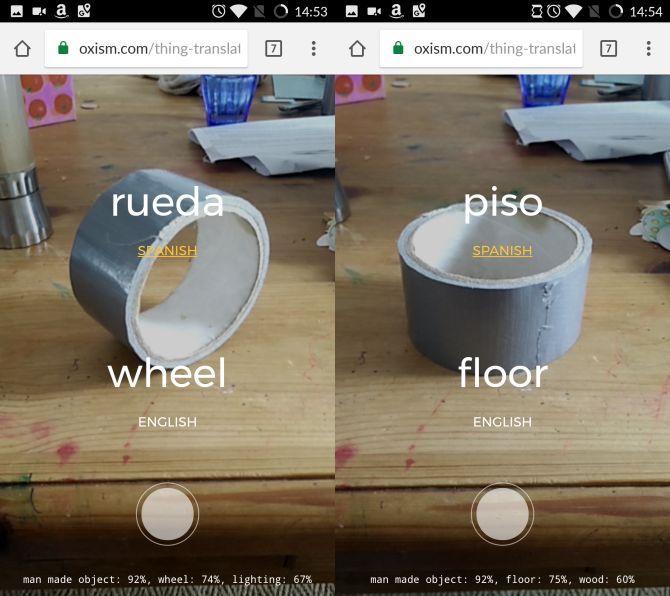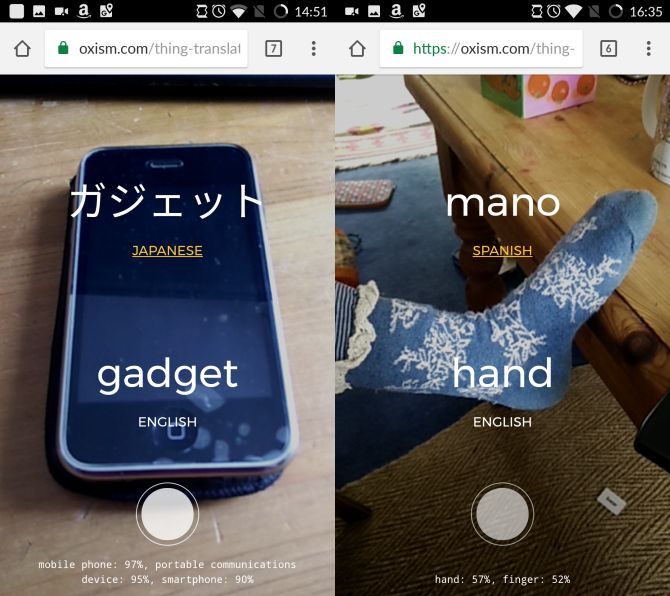Wherever the cutting edge of technology is, Google is not lagging far behind. Alternatively, they've extracted the enormous Google wallet from the unfathomably deep Google pockets, and are cutting a check to stay ahead of their competitors.
Artificial intelligence is no different.
Google has several AI experiments that you can go and play with right now. And because several of these experiments depend on machine learning, your direct interaction will actually help development. Here are some of the best Google AI Experiments that you can play with right now.
Please note that some of the experiments require access to a camera, either through your desktop or an Android device.
1. Thing Translator
I've had quite a bit of fun with Thing Translator. Why? Because you can walk around your house, scanning items, listening to the instant translations into one of nine languages. It is surprisingly addictive.
Thing Translator doesn't know what everything is, but it tries to translate anything you throw at it. For some objects, it defaults to "image," and certain spaces default to "design."
That said, Thing Translator can catch you off-guard. I took a picture of my face and received the response "hair" -- pretty apt, considering my beard, but not the "face" or "boy/man" response I was expecting.
Again, my kids pointed it at the rug on the floor, expecting it say "rug" or "carpet," but Thing Translator came back with "crochet." When you take a snap, it shows percentages of what it thought the image was, versus what it has translated.
Thing Translator isn't a 100 percent fool-proof translation device, as you've seen. But it would certainly help you out in a pinch, especially if you're in a well-connected foreign country using one of the integrated languages.
To use Thing Translator, you'll need an Android smartphone with a camera, or a computer with camera. Thing Translator is currently unavailable for iOS users.
Who said that artifical intelligence can't be useful?
Future Use
Thing Translator is already in use in several places, and you can use it so long as you have an internet connection. As the algorithm learns, the precision of its translated results will increase. Expect to see it as an integrated Android feature, or at least as an app marketed at travelers.
Please note that the version of Thing Translator on the Google Play Store is a rip-off of the actual product. Don't download it -- it could be a scam!
2. NSynth: Sound Maker
NSynth is another slightly addictive Google AI Experiment. It is a "sound maker," allowing you to "make unusual new sounds with machine learning." But what does that mean?
Well, you choose one sound, such as the harp, and combine it with another sound, such as a cat meowing. Yes. A harp. And a cat's meow. Did I mention that the sounds were unusual?
Below is a video of my kids and I combining sounds, so you'll get a real picture of how NSynth works.
Future Use
NSynth: Sound Maker doesn't appear to have any overarching use, except for the design of interesting new sound combinations. However, I'm not a particularly musical individual. Consequently, you might find vastly more value in this Google AI Experiment. The crazy combinations might be exactly what your band/orchestra/DJ-set has needed to push toward international stardom.
3. The Infinite Drum Machine
The Infinite Drum Machine combines thousands of everyday sounds into a single, easy-to-control drum machine. The creation of this AI experiment was interesting (and ongoing). The machine learning algorithm organizes sounds, but isn't given any descriptions or tags. Instead, it places similar sounds close together.
You slide one of four markers around the various colors, with each marker providing a beat-loop for the drum machine. You can then change the sequencer to build your own drum machine, in an endless loop, with options to randomize the sounds, or adjust the tempo.
Future Use
I couldn't discern any real use for NSynth. And while The Infinite Drum Machine might seem like another cacophony of noise, the organizational algorithm behind it -- t-distributed stochastic neighbor embedding or t-SNE -- is already used in cybersecurity, cancer research, bioinformatics, and more.
4. Giorgio Cam
This Google AI Experiment attempts to create a song out of the images you snap. Giorgio Cam uses image recognition to ascertain what you have taken a picture of, then turns the image labels into song lyrics. The song lyrics are then metered out over a jaunty electro-disco beat.
Honestly, this is hilariously awful and engaging at the same time. Like Thing Translator, Giorgio Cam gets some image recognition completely and utterly wrong, as you'll see in the below video. But it is a machine learning experiment, and as such, it is still learning.
Future Use
I'm wholly unsure. To create jaunty on-the-fly disco music while dropping fresh lyrics? I'm open to ideas on this one...
5. AI Duet
AI Duet lets you play an improvised piano duet with artificial intelligence. The best bits of AI Duet are the moments where your notes and the AI's sync, creating an exquisite harmonious moment. At least, they sound exquisite to me.
Which brings me nicely onto my next point: you need absolutely no musical knowledge to have a great time with AI Duet.
And that is exactly what AI Duet is about. Helping people to discover their potentially unrealized creativity through a machine learning experiment.
Future Use
Full musical collaborations with AI don't seem that unrealistic. Algorithmic compositions are an established part of music. This AI interface simply brings a human-like interface and response sequence to the algorithm. However, the AI Duet also points to a more contextually-aware AI that responds and iterates around our interaction.
Go and Experiment
The experiments we've looked at are fun to play around with. My kids found all of them amusing in one way or another. And they loved exploring the Bird Sounds AI Experiment. Check it out in the video below:
Furthermore, they provide a little insight into where AI is heading in the near future. And even when the immediate real-world use isn't immediately obvious, there are always more uses for the algorithm behind the AI interaction.
Do you think these AI experiments have potential? Which is the one experiment that can change our near future?
Image Credits: maxuser/Shutterstock



